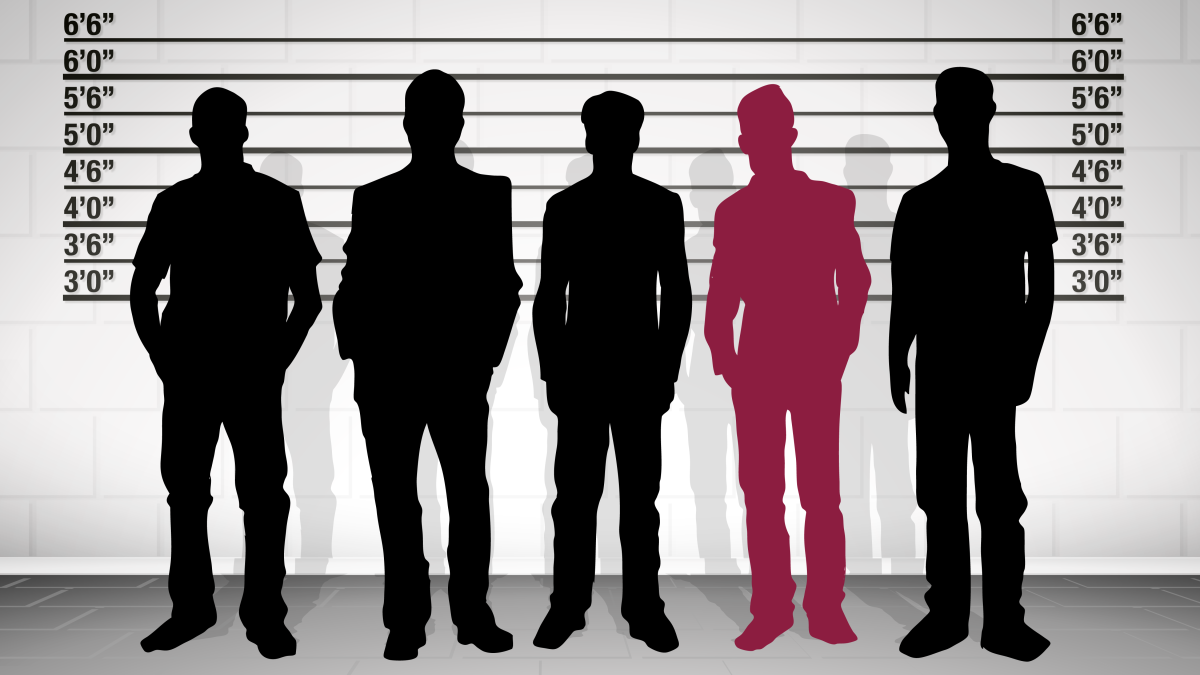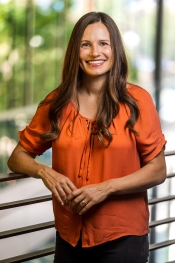When suspect lineups go wrong

Photo illustration from iStock; edited by Alex Davis/ASU Visual Communications.
It is one of the most famous cases of eyewitness misidentification.
In 1984, Jennifer Thompson was raped at knifepoint by a man who broke into her apartment. During the assault, she tried to make a conscious effort to memorize the features of the man's face. Later, during a police lineup, she was confident that she could identify the assailant but instead put Ronald Cotton, an innocent man, behind bars for 11 years.
Cotton was released after a DNA test in 1995. He and Thompson forged an unlikely friendship and wrote the book “Picking Cotton: Our Memoir of Injustice and Redemption,” about the unreliability of eyewitness testimony, which contributes to nearly 70% of the wrongful convictions uncovered through DNA testing.
Their story was a point of inspiration in the work of Laura Smalarz, an associate professor of psychology at Arizona State University's School of Interdisciplinary Forensics at the West Valley campus. Her research examines the causes of eyewitness misidentification and strategies for preventing them.
She and Thompson will be speaking about eyewitness identification evidence on Sept. 12 at the annual conference of the Arizona Association of Chiefs of Police held at Harrah's Ak-Chin Hotel and Casino in Maricopa, Arizona.
ASU News spoke with Smalarz about her work.
Question: What is the main focus of your research?
Answer: I’m a social psychologist by training and my research applies social psychology to the legal system. My main area of research is on eyewitness identification from police lineups. I investigate factors that affect eyewitness decisions, the testimony they give about what they witnessed and how people — such as jurors — evaluate their testimony.
Q: What does the research entail?
A: We systematically vary different aspects of the lineup procedure to test how they impact mock eyewitness lineup decisions, confidence and testimony. In my work, I often focus on a class of factors called suspect-bias factors. Suspect-bias factors are problematic because they increase the likelihood that an eyewitness will make a confident but mistaken identification.
Q: Can you give us an example of a suspect-bias factor in police lineups?
A: One example of a suspect-bias factor has to do with who conducts the lineup. Having someone involved with the case conduct the lineup can be problematic because administrators with case knowledge tend to behave differently compared to administrators with no knowledge of the case.
A case detective who knows which lineup member is under suspicion is more likely to engage in behaviors that lead eyewitnesses to identify the suspect than a neutral lineup administrator who doesn’t know which lineup member is under suspicion. Such behaviors increase the risk of mistaken identification when the suspect is innocent, which happens when the police have unknowingly focused their investigation on the wrong person.
Q: How common of a problem is eyewitness misidentification?
A: Field data from cases involving real eyewitnesses show that one out of every three eyewitnesses who choose someone from a lineup are mistaken. This high error rate can help explain why eyewitness misidentifications are a leading cause of wrongful conviction.
Q: Your work involves establishing evidence-based practices for collecting eyewitness identification evidence. What are some of those practices?
A: One such procedure is called a double-blind lineup, in which neither the eyewitness nor the lineup administrator knows which lineup member is the suspect. As I mentioned, having a neutral investigator conduct the lineup helps avoid the possibility of suspect bias.
Another procedure is to collect a confidence statement from the eyewitness as soon as the eyewitness makes an identification. That means that eyewitnesses are asked how confident they are in their decision. Confidence collected at the time of the lineup is much more informative than when collected during an eyewitness’s testimony at trial.
My research has refined these best-practice procedures, for example, by investigating whether eyewitnesses should report their confidence numerically or in their own words. I also work to bring the science of eyewitness identification to people who can use it by conducting trainings with police, lawyers and judges.
Q: You are speaking at the upcoming conference of the Arizona Association of Chiefs of Police. What will you talk about?
A: I’ll be discussing the nine scientific best practices researchers have developed for collecting eyewitness identification evidence. Arizona currently doesn’t have any statewide procedural requirements for collecting eyewitness identification evidence, so I’m excited to share the research with detectives from across the state who conduct lineups as part of their day-to-day work.
I am also honored to speak alongside Jennifer Thompson, the crime survivor involved in one of the most well-known cases of wrongful conviction based on eyewitness misidentification. Thompson has been a champion of eyewitness identification reform and brings a critical perspective to the problem of wrongful conviction. Whenever a wrongful conviction happens, it’s a miscarriage of justice for the person who was wrongfully convicted. But what is often overlooked is the injustice suffered by the crime victims and their families.
Q: How has this case inspired you?
A: Jennifer Thompson seemed like the ideal eyewitness — she described how she intentionally studied the face of the man who assaulted her, she was determined to bring him to justice if she survived the attack and she was completely confident in her identification of Ronald Cotton. Ten years after Cotton was convicted, DNA testing revealed that he was actually innocent.
When you go back and look at the procedures police used to obtain Thompson’s identification of Cotton, it’s immediately apparent how this happened. There were multiple factors in the case that biased Thompson toward identifying Ronald Cotton and inflated her confidence in her mistaken identification. I discuss these factors in my 2021 article “Suspect bias: A neglected threat to the reliability of eyewitness identification evidence.”
A key takeaway from this case and others like it is that the legal system can prevent these miscarriages of justice by implementing scientific best-practices for collecting identification evidence from eyewitnesses.
More Science and technology

ASU, Princeton scientists uncover surprising insights into habitability of super-Earths
A recent study conducted by a collaboration of scientists from Arizona State University and Princeton University have discovered that super-Earths — rocky planets up to approximately five times the…

Evolving the framework of cancer theory
Cancer cells are driven by the same imperative guiding all living things: to grow, survive and reproduce. Although cancer’s evolutionary underpinnings have been recognized since the 1950s, clinicians…

ASU travel behavior research center provides insights on the future of transportation
The Center for Teaching Old Models New Tricks, known as TOMNET, has spent the past seven years conducting research and developing tools to improve transportation systems planning methods and data.As…
